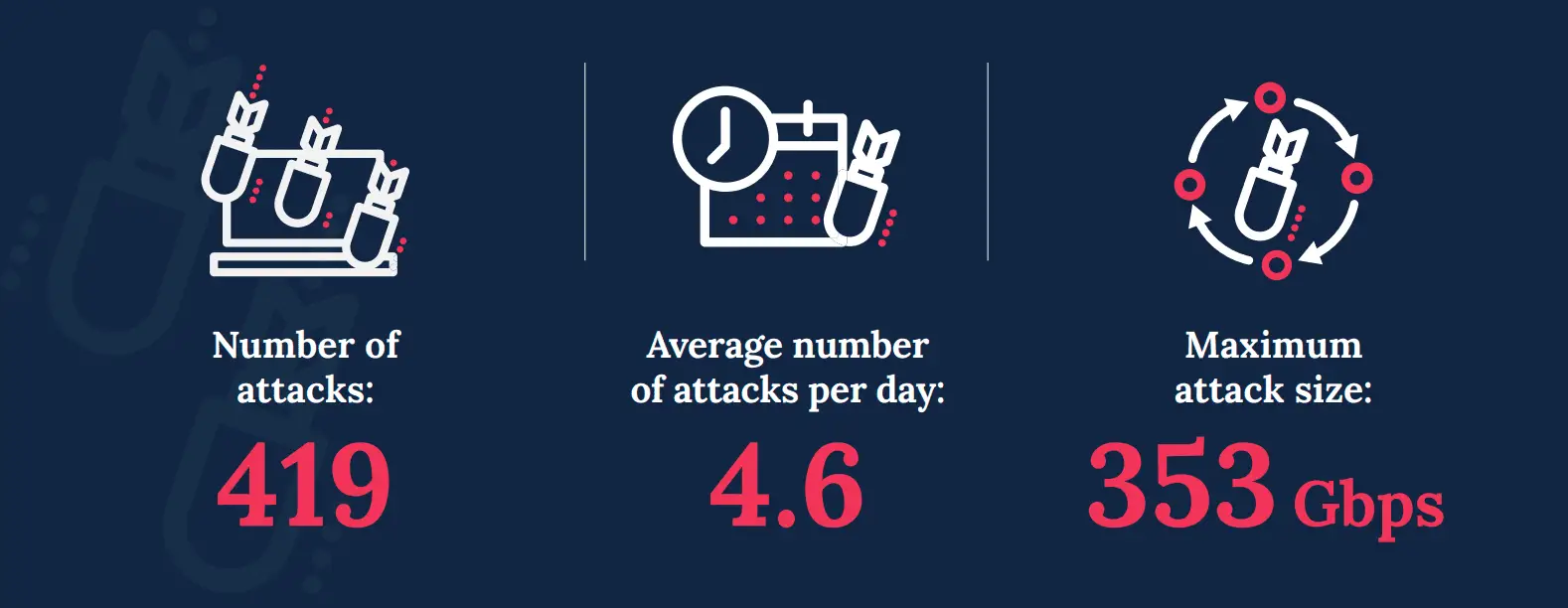
Image Credit: NaWas
The Dutch National Scrubbing Center (NaWas), which protects its participants from DDoS attacks, recorded a significant decrease in the number of attacks in the second quarter of this year. Between April and June, the center processed 419 attacks, a substantial reduction compared to 556 attacks in the previous quarter. These figures were published by the Nationale Beheersorganisatie Internet Providers (NBIP).
Historical data indicates that this trend aligns with seasonal fluctuations: the number of attacks is typically higher in the early months of the year compared to the second quarter.
However, despite the overall decline in the number of attacks, there was a sharp increase in the number of large-scale attacks exceeding 100 Gbps during the reporting period. The most powerful of these reached 353 Gbps. The most common types of attacks remained DNS Amplification, Memcached Amplification, NTP Amplification, UDP flood, and ACK flood.
Complex and aggressive attacks from hacktivist groups continue to pose the greatest threat, often targeting government structures and healthcare institutions amid various conflicts.
Of particular concern is the rise in attacks aimed at critical network infrastructure. These attacks exploit the time-to-live (TTL) mechanism, allowing them to overload and disable network equipment.
Notably, before the European Parliament elections, hacktivists announced an increase in the frequency of such attacks via their messages on Telegram. Although the situation is relatively calm at present, NaWas experts emphasize the importance of constant vigilance.
Related Posts:
- Memcached was exploited to launch DDoS amplification attacks to a peak of 500 Gbps
- Cryptocurrency miners spent $776 million to buy GPUs
- Wall Street analysts say Bitcoin will exceed $25,000 by the end of this year
- Virus Retreat: November Sees 18% Drop in Threats Detected by Dr.Web